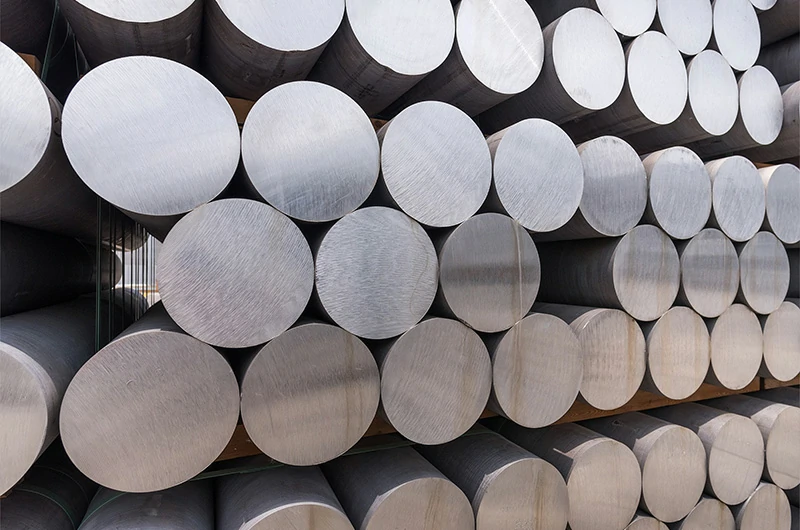2618 Aluminum is a highly ductile alloy that retains excellent strength at elevated temperatures (200-250°C).
Its highly machinable characteristics make 2618 aluminum an ideal metal for jet engine components, structural and piping applications, as well as high-performance racing pistons.
Specifications of 2618 aluminum round bar
DTD Standards: DTD 5014 A, DTD 717A, DTD 731B, DTD 745A, DTD 5084A
Aerospace Standards: AIR 9048.640, AIR 9048.150, AIRBUS ABM1-1006, ASN-A-3355, ASN-A-3357, AMS 4132
International Standards: Werkstoff Nr. 3.1924, EN 2123, EN 3553, UNI 9002/6
Other Standards: MSRR 8018A (now replaced by RRMS 34000), AMS-STD-2154 A
We also offer third-party inspection, buyer inspection, and factory quality certification.
Stock sizes of 2618 aluminum round bar
We are a professional aluminum supplier and can provide 2618 aluminum round bars in your custom sizes and shapes.
We can also cut the bars according to your machining requirements.Quick Quote
- Temper: T1, T6, T351, T851, T62, T6511, T8, T8511, F
- Diameter: 5 - 1320 mm
- Maximum Length: 7500 mm
- Common Diameters: Φ166, Φ220, Φ380, Φ396, Φ448, Φ462, Φ566, Φ582
| Description | Diameter (mm) | Diameter (in) | Maximum Length |
| 2618 Aluminum Round Bar Diameter 6 mm | Φ6 mm | 0.2 in | 7500 mm |
| 2618 Aluminum Round Bar Diameter 10 mm | Φ10 mm | 0.3 in | 7500 mm |
| 2618 Aluminum Round Bar Diameter 12 mm | Φ12 mm | 0.4 in | 7500 mm |
| 2618 Aluminum Round Bar Diameter 20 mm | Φ20 mm | 0.7 in | 7500 mm |
| 2618 Aluminum Round Bar Diameter 30 mm | Φ30 mm | 1.2 in | 7500 mm |
| 2618 Aluminum Round Bar Diameter 40 mm | Φ40 mm | 1.5 in | 7500 mm |
| 2618 Aluminum Round Bar Diameter 50 mm | Φ50 mm | 2 in | 7500 mm |
| 2618 Aluminum Round Bar Diameter 60 mm | Φ60 mm | 2.5 in | 7500 mm |
| 2618 Aluminum Round Bar Diameter 80 mm | Φ80 mm | 3 in | 7500 mm |
| 2618 Aluminum Round Bar Diameter 100 mm | Φ100 mm | 4 in | 7500 mm |
| 2618 Aluminum Round Bar Diameter 166 mm | Φ166 mm | 6.5 in | 7500mm |
| 2618 Aluminum Round Bar Diameter 220 mm | Φ220 mm | 8.5 in | 7500mm |
| 2618 Aluminum Round Bar Diameter 380 mm | Φ380 mm | 15 in | 7500mm |
| 2618 Aluminum Round Bar Diameter 396 mm | Φ396 mm | 16 in | 7500mm |
| 2618 Aluminum Round Bar Diameter 448 mm | Φ448 mm | 17.5 in | 7500mm |
| 2618 Aluminum Round Bar Diameter 462 mm | Φ462 mm | 18 in | 7500mm |
| 2618 Aluminum Round Bar Diameter 566 mm | Φ566 mm | 22 in | 7500mm |
| 2618 Aluminum Round Bar Diameter 582 mm | Φ582 mm | 23 in | 7500mm |
| 2618 Aluminum Round Bar Diameter 915 mm | Φ915 mm | 36 in | 4500mm |
| 2618 Aluminum Round Bar Diameter 1060 mm | Φ1060 mm | 42 in | 4500mm |
| 2618 Aluminum Round Bar Diameter 1220 mm | Φ1220 mm | 48 in | 4500mm |
| 2618 Aluminum Round Bar Diameter 1320 mm | Φ1320 mm | 52 in | 4500mm |
Chemical composition of 2618 aluminum round bar
Our company supplies 2618 and 2618A aluminum alloys to meet the needs of different regions and industries.Quick Quote
| Chemical Element % | Alloy 2618 USA | Alloy 2618A EAA |
| Si | 0.10-0.25 | 0.15-0.25 |
| Fe | 0.9-1.3 | 0.9-1.4 |
| Cu | 1.9-2.7 | 1.8-2.7 |
| Mn | - | 0.25 max |
| Mg | 1.3-1.8 | 1.2-1.8 |
| Ni | 0.9-1.2 | 0.8-1.4 |
| Zn | 0.10 max | 0.15 max |
| Ti | 0.04-0.10 | 0.20 max |
| Zr + Ti | - | 0.25 max |
| Other (Each) | 0.05 max | 0.05 max |
| Others (Total) | 0.15 max | 0.15 max |
| Aluminium (Al) | Balance | Balance |
Mechanical properties of 2618 aluminum round bar
| Material | Thickness | Yield Strength (MPa) | Tensile Strength (MPa) | Elongation on 50mm min (%) | Elongation on 5.65v (min %) |
| DTD 5014A Alloy 2618 | 10 mm and below | 320 | 400 | 5 | - |
| DTD 5014A Alloy 2618 | 10-10 mm | 340 | 420 | 7 | 8 |
Physical properties of 2618 aluminum round bar
| Physical Property | Value |
| Brinell Hardness | 120 |
| Melting Point | 640°C |
| Specific Heat Capacity | 880 J/kg-K |
| Thermal Conductivity | 160 W/m-K |
| Thermal Expansion | 22 µm/m-K |
| Electrical Conductivity | 37 % IACS |
Advantages of 2618 aluminum round bar
- Excellent mechanical strength at high temperatures
- Good machinability
- Highly ductile alloy
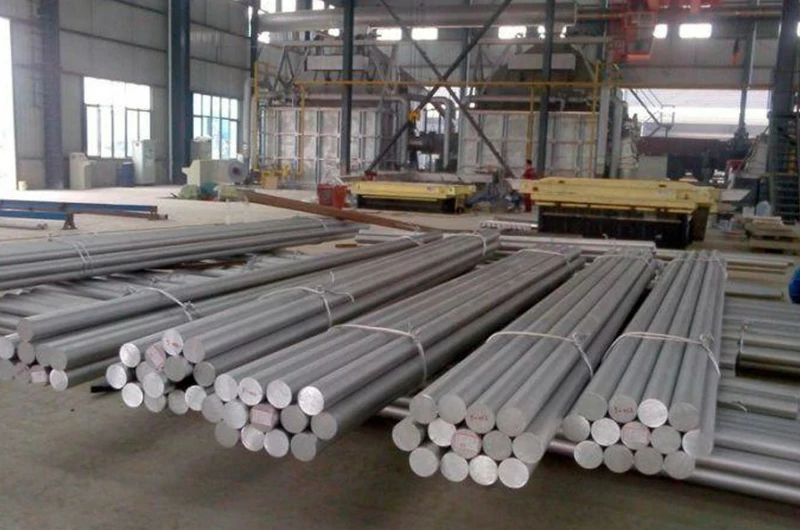
Ultrasonic testing of 2618 aluminum round bar per ASTM B594-13
- Compared to other ordinary suppliers, we strictly adhere to the ASTM B594-13 standard, ensuring that our product quality far exceeds industry averages.
- Through ultrasonic testing, our 2618 aluminum bars guarantee that there are no visually undetectable defects, such as microcracks or voids, within the material..
- We provide testing for aluminum bars of various thicknesses and specifications based on customer requirements, ensuring they meet the demands of complex applications.
- Our 2618 aluminum bars not only possess high strength but have also been verified through ultrasonic testing, making them suitable for high-demand fields such as machinery, aerospace, and automotive, allowing customers to use them with complete confidence.
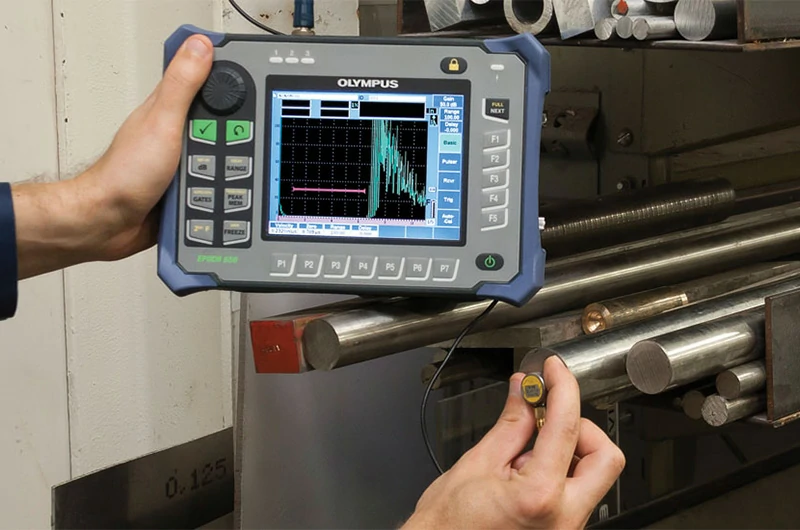
Machining recommendations for 2618 aluminum round bar
Hot Working: This alloy can be easily hot worked within the temperature range of 660°F to 700°F (approximately 350°C to 370°C).
Cold Working: The 2618 aluminum bar exhibits good formability in the solution heat-treated or annealed condition, making it suitable for various cold working operations. It is recommended to hold the annealing temperature at 725°F (approximately 385°C) for 4 hours, followed by slow cooling (typically furnace cooling).
Welding Recommendations: This alloy is suitable for resistance welding, which yields excellent results. However, traditional fusion welding methods may introduce high heat input that could negatively affect the performance of 2618 aluminum, so these methods are not recommended.
Real-World application cases of 2618 aluminum round bar
Engine manufacturers such as Rolls-Royce use 2618 aluminum alloy in critical components of certain turbine engines. Its ability to withstand high-temperature and high-pressure conditions within the turbine ensures the stable operation of the engine.
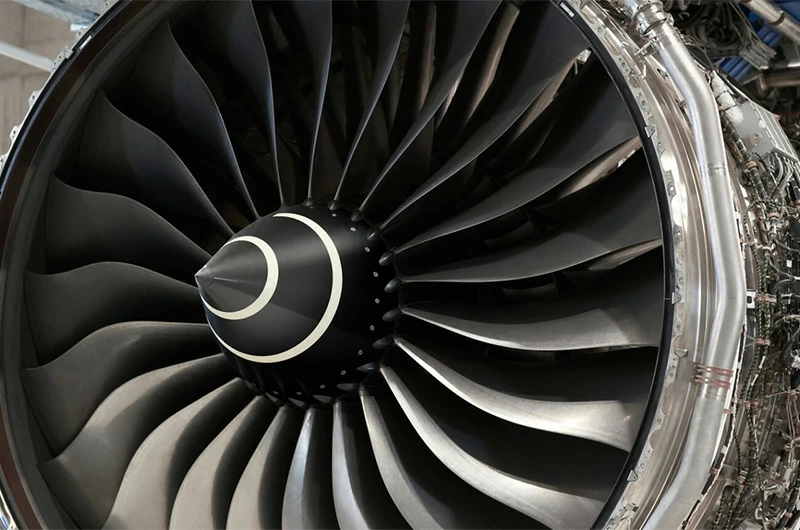
2618 aluminum alloy is commonly used in the manufacture of high-performance racing pistons, particularly in top-level competitions such as F1. This is due to its excellent stability at high temperatures and its ability to absorb and dissipate extreme heat, preventing piston damage from overheating.
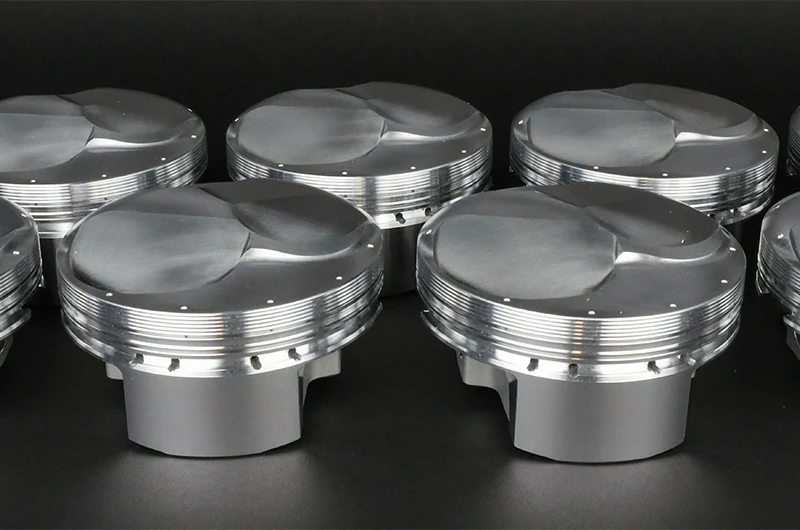
Differences between 2618 aluminum alloy and 2618A aluminum alloy
Chemical composition differences
2618 Alloy: Commonly used in U.S. standards, it contains aluminum, copper, magnesium, nickel, and other alloying elements. The copper content ranges from 2.0% to 2.8%, with a higher magnesium content that provides better high-temperature strength and creep resistance.
2618A Alloy: The chemical composition is slightly different, particularly with stricter controls on certain impurity elements (such as iron and silicon). This stringent control can offer superior mechanical properties in certain aerospace and high-performance applications.
Standards and specifications
2618 Alloy: More commonly used in U.S. aerospace and industrial standards, such as AMS 4132. This alloy is used to manufacture high-performance components like jet engine parts and racing pistons, adhering to specific ASTM and AMS standards.
2618A Alloy: More frequently adopted in European standards, such as EN 2618 and some international aerospace standards. It is often found in specific applications in certain countries or regions, such as Airbus aircraft and high-performance machinery manufacturing in Europe.
Minor differences in mechanical properties
The 2618A alloy may exhibit slightly better strength performance and corrosion resistance in specific environments (e.g., high-temperature conditions). This makes 2618A favored in certain aerospace and military applications.
The 2618 alloy, on the other hand, has broader applications in industrial and automotive fields, especially in manufacturing high-performance racing pistons, as its strength and heat treatment characteristics are well-suited for components requiring high thermal resistance.


